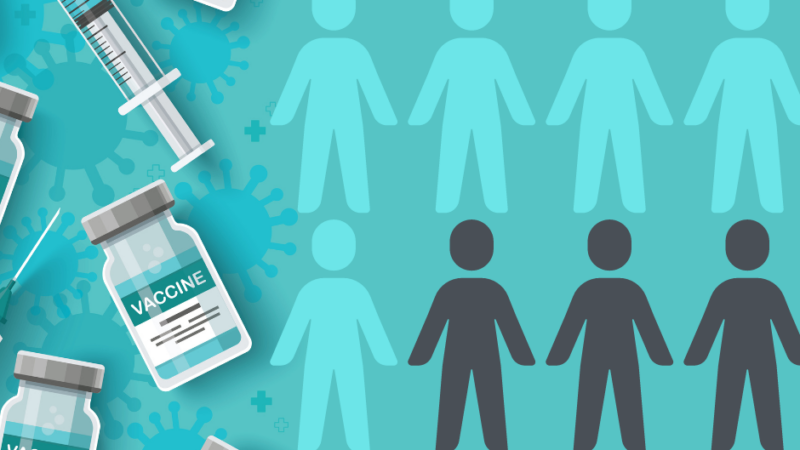CDC reports 1 in 36 boys are autistic

Nearly 4 years ago, CNN blasted this headline: “Autism rates now 1 in 68 U.S. children: CDC“.
At a special panel discussion about GMOs in 2014, MIT Researcher Dr. Stephanie Seneff, PhD predicted 1 in 2 children would be diagnosed with Autism by 2025. Seneff is a respected scientist who has published over 170 peer-reviewed articles.
Last week, the National Health Center for Health Statistics (NCHS) released its latest incidence for autism spectrum disorders (ASDs) in American children. Their document, based on information collected in the National Health Information Survey (NHIS), reveals an ASD rate of 2.76%, or 1 in 36 American children for 2016.
Source: Zablotsky B, Black LI, Blumberg SJ. Estimated prevalence of children with diagnosed developmental disabilities in the United States, 2014–2016. NCHS Data Brief, no 291. Hyattsville, MD: National Center for Health Statistics. 2017.) https://www.cdc.gov/nchs/data/databriefs/db291.pdf
The breakdown:
1 in 35 children (8-12 years of age) have autism.
1 in 28 boys (3-17 years of age) have autism.
More than 6% of our children have a developmental disability (1 in 16).
More than 8% of our boys have a developmental disability (1 in 12).
The current projected rate of increase in autism to 1 in 2 by 2025 is clearly unsustainable!
Why normalizing autism is not the answer
Conventional recommendations call for “normalizing” autism. Examples of this are provided in this paper published on the NCBI database in the scholarly journal Front Psychology, a Washington Post article centered upon the importance of autism-friendly characters on the PBS children’s show Sesame Street, and an op ed piece featured in the New York Times from an English professor proclaiming how this change in PBS characters will help enable the normalization of autism to benefit her autistic daughter.
We highlight this situation not to make light of the condition of ASD nor to imply that autistic individuals aren’t worthy of the same rights, treatment and consideration that others receive. We want to impress that ASD is indeed a condition of which we should all be paying attention; not to merely accept it as “just the way it is”, but to recognize it for what it is: a progressive syndrome that is on the rise, and which there is an identifiable cause and solution.
Individuals diagnosed with ASD do not have to be sentenced to a life of disability and handicap. There are verifiable ways to heal from this illness that the conventional health and medical communities continue to ignore and refuse to employ for the betterment of our population.
The result of this patent dismissal is a continued increase in the incidence of ASD. Can our society sustain this alteration? As its effects become more acute, we continue to be affected by its impact on our familial and social structures, and economic stability. Marcella Piper-Terry expounds upon this in her paper: Autism and Families: Stress and Divorce, and the Economic Considerations. A Review of the Literature from 2012. Read more in The Financial Impact of an Autism Diagnosis.
Another result is that anyone opposing this narrative is considered uninformed and discreditable.
Credible support for finding the root cause of autism
There are a growing number of health professionals who acknowledge this fact. Some include Dr. Natasha Campbell McBride, author of Gut and Psychology Syndrome (The GAPS Diet). Others include Dr. Ray Sahelian. M.D., Dr. Suruchi Chandra,M.D., Joette Calabrese, HMC, CCH, RSHom(Na), Dr. Kelly Brogan, M.D., author of A Mind Of Your Own and presenter of Autism Intensive HD video interviews, and Kim Schuette, CN, Certified GAPS Practitioner. These are just a few pioneers in the health communities working to heal the explosion of ASD and related syndromes, caused by unnatural conditions in our food supply, soil, water, air and all environments.
These professionals contend that autism is NOT normal. And it is an epidemic. It’s time we did something concrete to acknowledge what’s causing it. It’s time we stop saying “we don’t know what causes autism”. It’s time the medical and health communities rallied together, despite their differences, and look for something beyond genetic causes. This is because it has been demonstrated scientifically, beyond reasonable doubt, that genetics CANNOT modify that quickly.
This is not new information, it has simply been censored. For example, in 2011, Joachim Hallmayer, MD, leading author of a paper published in the July 4 issue of Archives of General Psychiatry from Stanford University of Medicine. Read more from Stanford University.
“Our work suggests that the role of environmental factors has been underestimated.” Hallmayer is an associate professor of psychiatry and behavioral sciences at Stanford. The study’s senior author is Neil Risch, PhD, professor of biostatistics at UC-San Francisco and director of the UCSF Institute for Human Genetics.
Here’s why we need not accept the current trajectory of autism increase: only 4 years ago 1 in 68 children were being diagnosed as autistic.
Today it’s 1 in 36. It doesn’t take a large leap to understand that this scenario is not due to “heightened diagnostics”. Clearly, this situation is due to a case of epigenetics.
What are epigenetics? It is happening everywhere we look these days.
Definition of epigenetics: relating to or arising from nongenetic influences on gene expression.
These changes are not genetic in origin. In short, our genes are being altered in every imaginable way possible: our food, soil, water, air, personal care products, beverages, clothing, furniture, and essentially everything we touch. Each of these factors, added in, can cause changes around the genes that are capable of turning those genes off or on, as time passes. As a result, certain diseases including autism, Alzheimer’s, and other auto-immune conditions, various genes will be thrown into the opposite state, away from the normal/healthy state.
Only something environmental would cause a change like this, so rapidly.
We encourage research, cleaning up the diet, removing environmental factors, and seeking out like-minded folks in our communities, both parental, medical, health and scientific. There is a WEALTH of support for those who want to heal themselves and their children of ASD and related issues.
Additional reading:
15 year old autistic teen has 10x amount of aluminum in brain than elderly person
Why diet, environment, toxin exposure and lifestyle MATTERS
Scientific study confirms DTP vaccination increases risk of allergies
Organic baby foods test positive for dangerous contaminants
The impact of toxic exposure to aluminum
Glyphosate contaminated “all natural” bread and breakfast cereals






